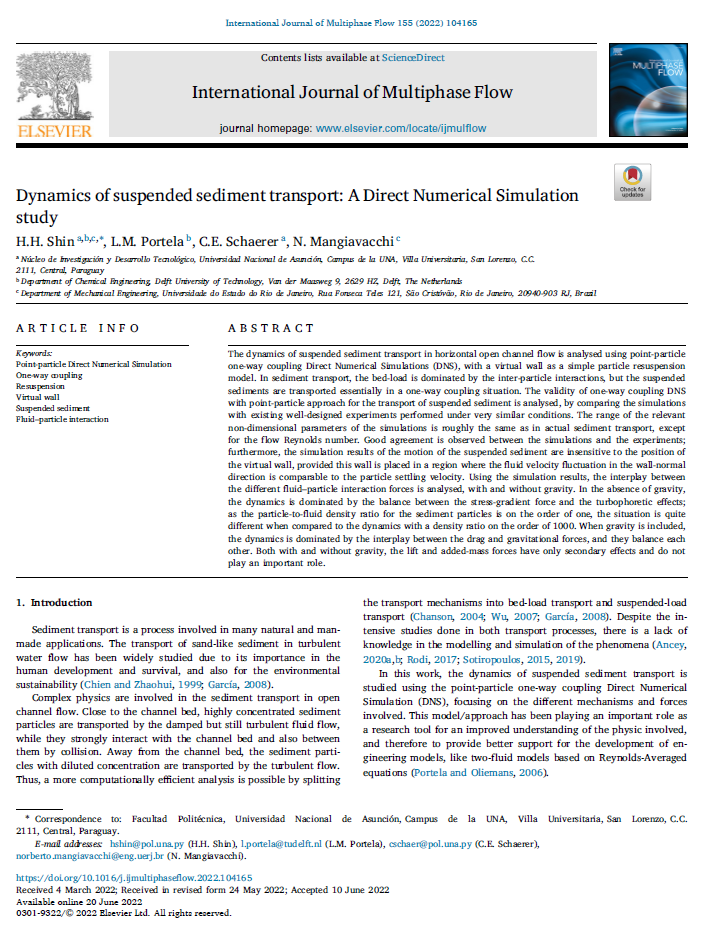
Authors: H.H. Shin a,b,c, L.M. Portela b, C.E. Schaerer a, N. Mangiavacchi c
Affiliations: a Núcleo de Investigación y Desarrollo Tecnológico, Universidad Nacional de Asunción, Campus de la UNA, Villa Universitaria, San Lorenzo, C.C.
2111, Central, Paraguay.
b Department of Chemical Engineering, Delft University of Technology, Van der Maasweg 9, 2629 HZ, Delft, The Netherlands.
c Department of Mechanical Engineering, Universidade do Estado do Rio de Janeiro, Rua Fonseca Teles 121, São Cristóvão, Rio de Janeiro, 20940-903 RJ, Brazil.
Keywords: Point-particle Direct Numerical SimulationOne-way couplingResuspensionVirtual wallSuspended sedimentFluid–particle interaction
Abstract: The dynamics of suspended sediment transport in horizontal open channel flow is analysed using point-particle one-way coupling Direct Numerical Simulations (DNS), with a virtual wall as a simple particle resuspension model. In sediment transport, the bed-load is dominated by the inter-particle interactions, but the suspended sediments are transported essentially in a one-way coupling situation. The validity of one-way coupling DNS with point-particle approach for the transport of suspended sediment is analysed, by comparing the simulations with existing well-designed experiments performed under very similar conditions. The range of the relevant non-dimensional parameters of the simulations is roughly the same as in actual sediment transport, except for the flow Reynolds number. Good agreement is observed between the simulations and the experiments; furthermore, the simulation results of the motion of the suspended sediment are insensitive to the position of the virtual wall, provided this wall is placed in a region where the fluid velocity fluctuation in the wall-normal direction is comparable to the particle settling velocity. Using the simulation results, the interplay between the different fluid–particle interaction forces is analysed, with and without gravity. In the absence of gravity, the dynamics is dominated by the balance between the stress-gradient force and the turbophoretic effects; as the particle-to-fluid density ratio for the sediment particles is on the order of one, the situation is quite different when compared to the dynamics with a density ratio on the order of 1000. When gravity is included, the dynamics is dominated by the interplay between the drag and gravitational forces, and they balance each other. Both with and without gravity, the lift and added-mass forces have only secondary effects and do not play an important role.
